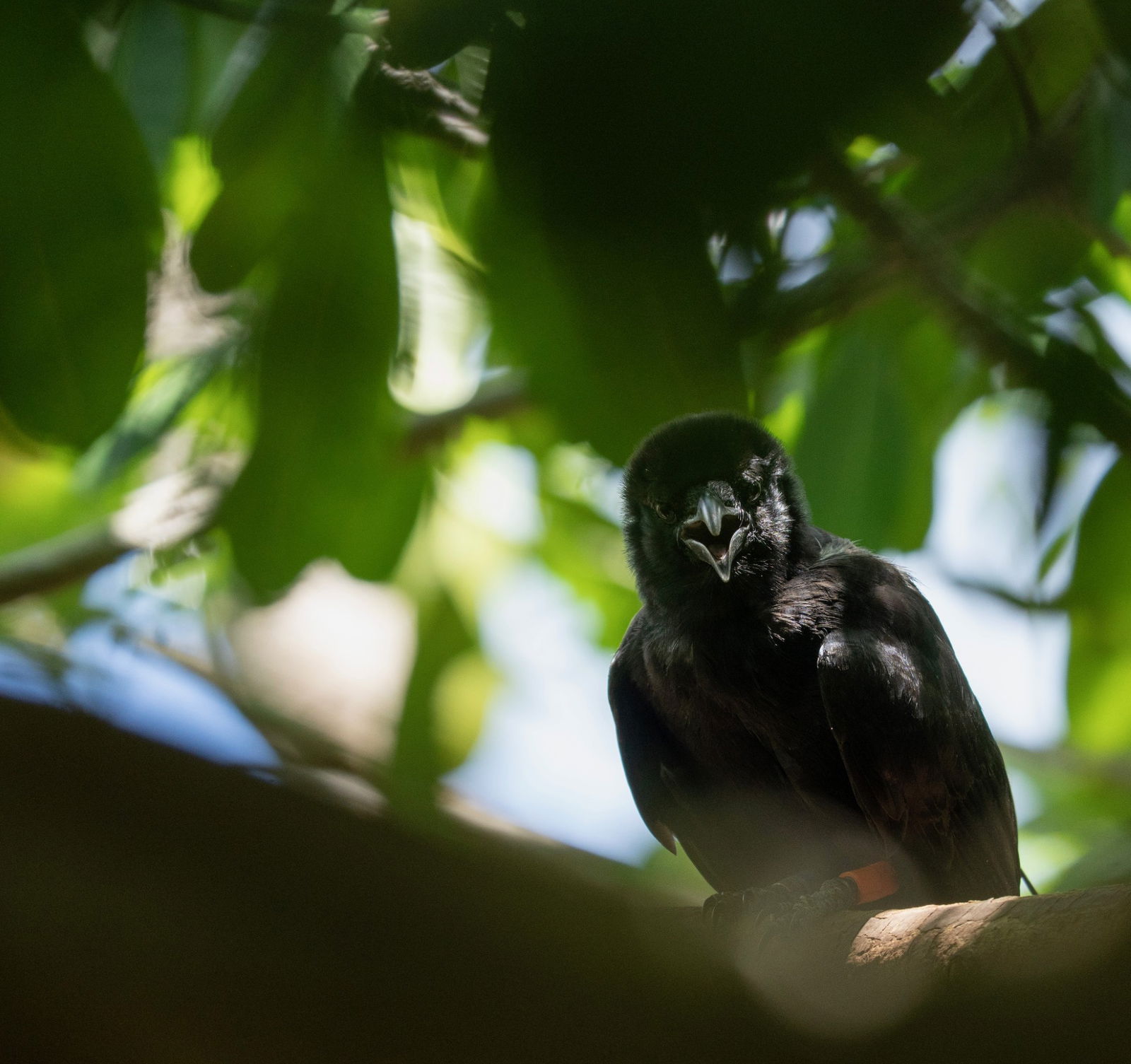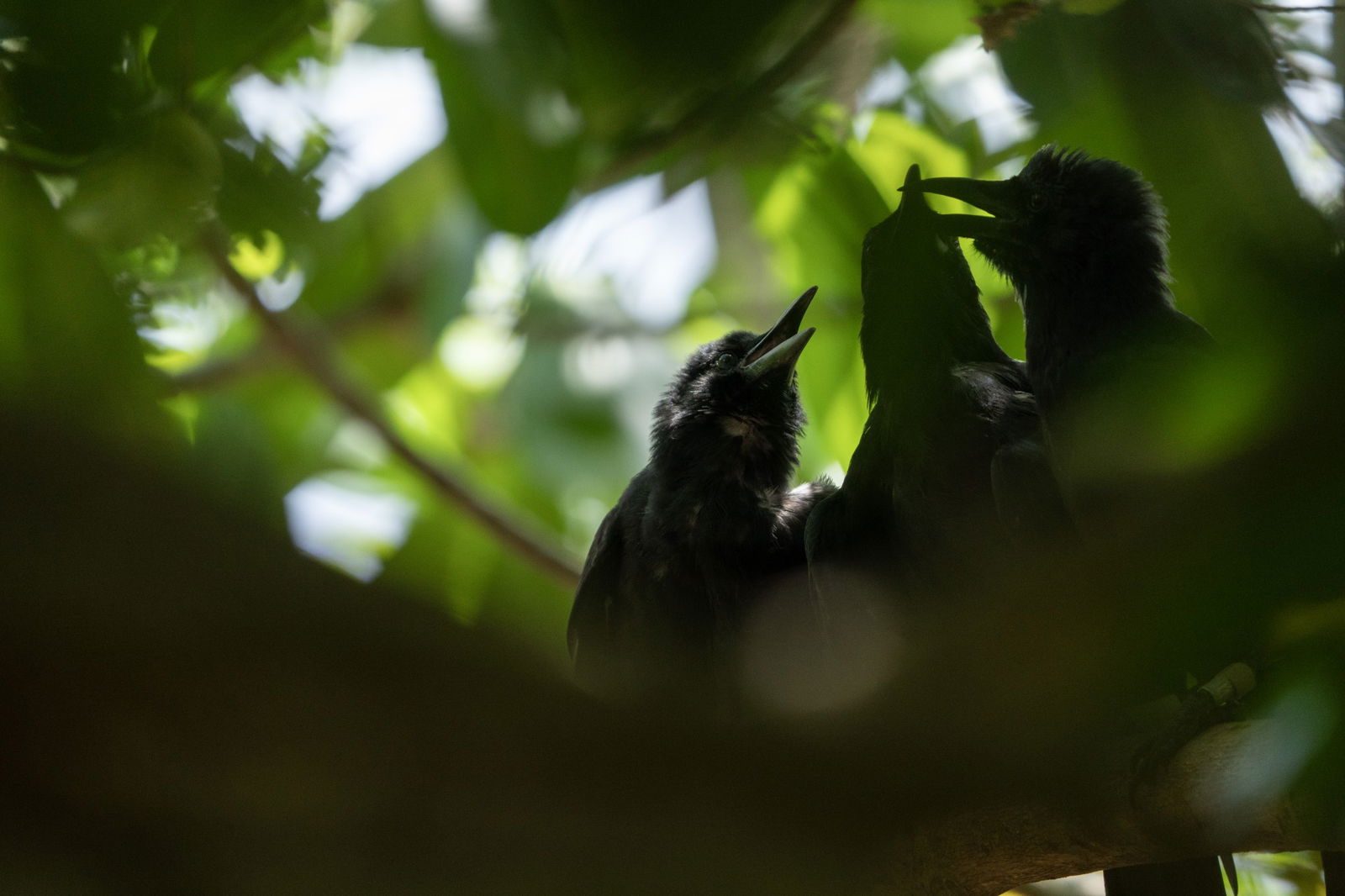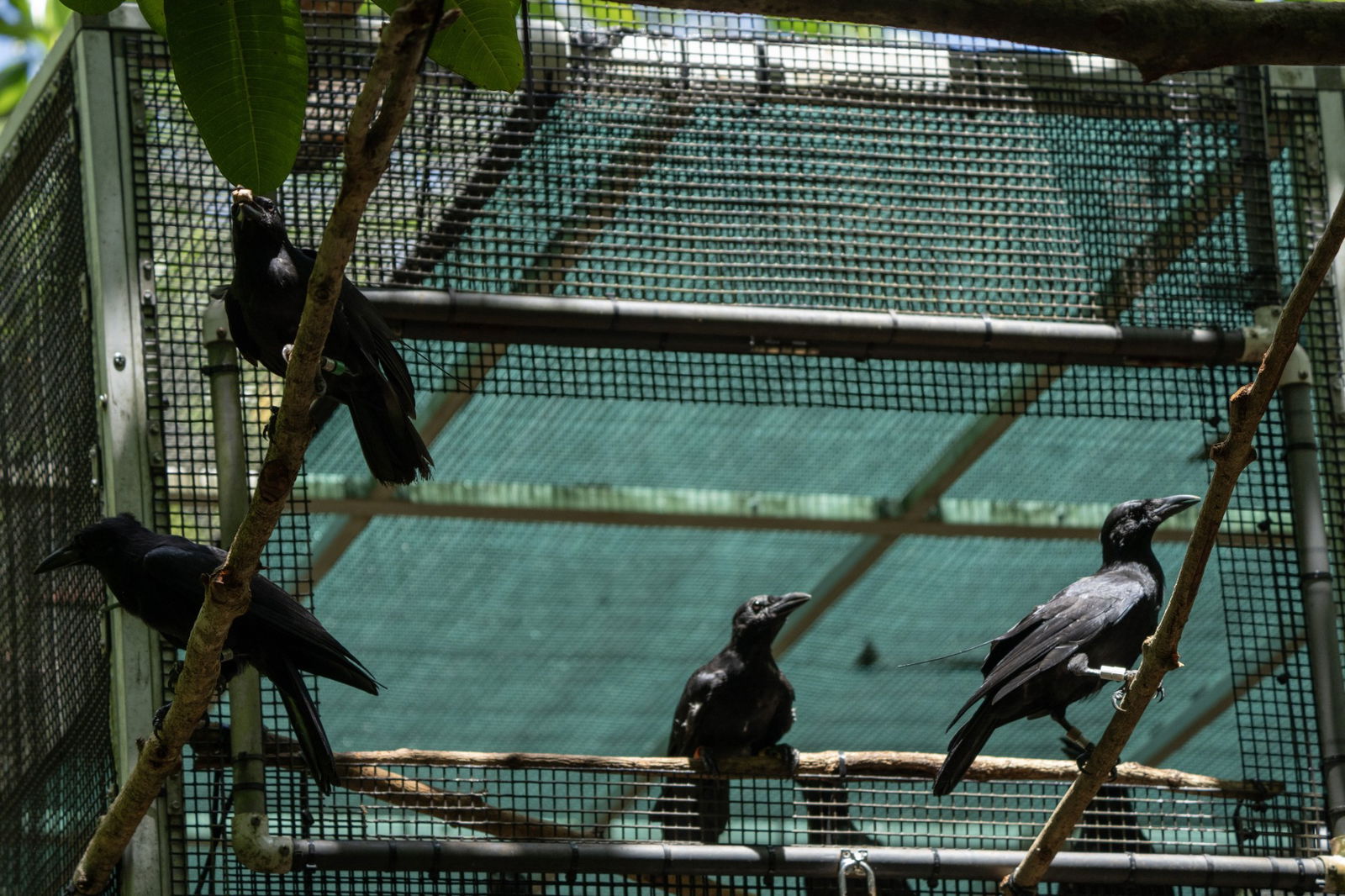


(CNMI Department of Lands and Natural Resources & University of Washington) — Åga enthusiasts can rejoice as the species reached an important milestone recently. The Mariana Crow (Corvus kubaryi), known in Chamorro as “Åga,” has been listed as an endangered species in the Marianas since 1984. Though once plentiful, the introduction of the Brown Tree Snake to Guam in the 1940’s led to their decline and listing, with the population on Luta or Rota being the last remaining of what had been a thriving species.
The good news: in June this year, 23 hand-reared Åga were released back into the jungles of Luta, marking the sixth Åga release on the island. Home to the last population of this critically endangered species, the only crow in Micronesia has declined on Luta since the 1980s, prompting the CNMI Department of Lands & Natural Resources and partners to take action.
“The Åga are unique among birds,” explained Dr. Sarah Faegre, the lead biologist for the University of Washington’s Mariana Crow Recovery Project. “They are extremely intelligent, good problem solvers, and highly adaptable. They are the only crow that knows how to peck open hermit crab shells and they also eat a variety of pests like paper wasp larva, centipedes, and have even been observed eating rats and pulling out the tongue of a cane toad. They can live for up to 25 years and have strong ties with family members.” To date, 85 åga have been released to the wild through a captive-rear-and-release program carried out on Luta by the San Diego Zoo Wildlife Alliance, in partnership with the University of Washington, funded by CNMI-DLNR and USFWS. “Seventy-two percent of the åga we have released are still alive and thriving,” said Dr. Faegre.
The rear-and-release program is also made possible with the collaboration of many Indigenous landowners who allow biologists to survey their lands and access remote conservation areas that would otherwise be difficult to reach. “We are grateful for local landowners and the community of Luta for allowing this work to continue” said Carey Demapan, DLNR’s Endangered Species Program Manager. “We are optimistic our efforts are contributing to the recovery of the species” said Demapan.
Åga can breed year-round on Luta but most nests fail, and the young that are produced often die before reaching maturity. Luckily, åga pairs will lay new eggs if they lose their first clutch, which allows conservation biologists to collect eggs each year (up to 15) for captive-rearing while the wild pairs go on to replace the lost eggs and continue to rear their young in the wild. The åga population on Luta has grown from 46 breeding pairs in 2014 (Kroner & Ha 2018) to 71 pairs in 2024. Ten percent of these åga were reared and released by the program. The adult released åga often pair with wild mates and thus far have produced 4 fledglings (baby birds) of their own.
With 71 adult pairs, the current population on Luta is just shy of the 75 breeding pairs needed to maintain a viable breeding population on Luta, an important milestone for DLNR and partners. The criteria for downlisting the species include 75 breeding pairs on Luta and one other location. Rearing of the next cohort of åga for release into the wild will begin this September.
For more information you may contact the DLNR Endangered Species Program at (670) 322-9834 or the UW Mariana Crow Recovery Project at (670) 532-0057.











